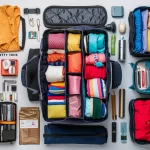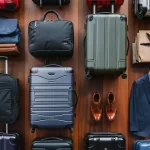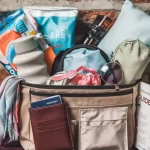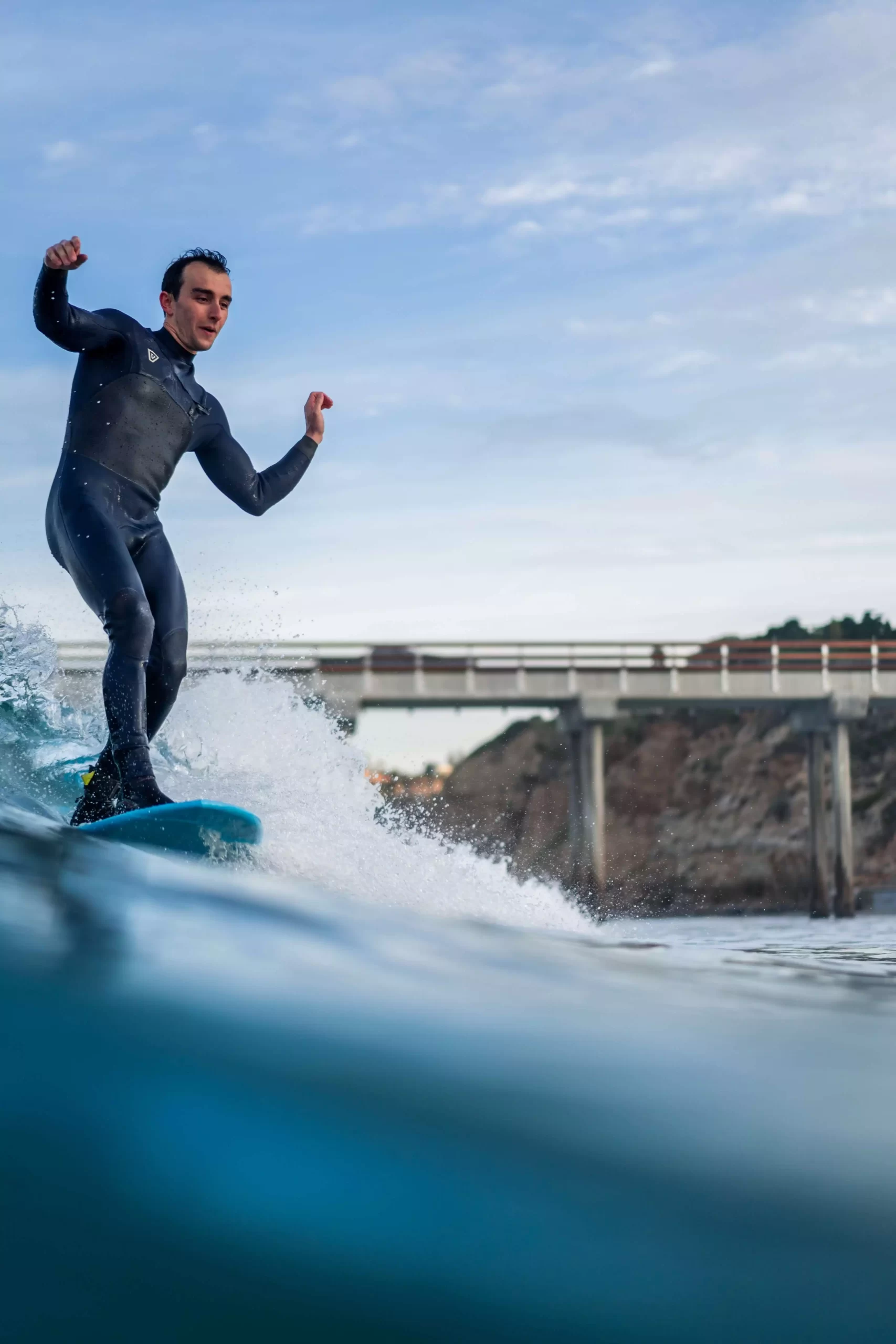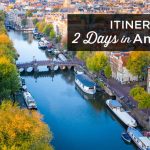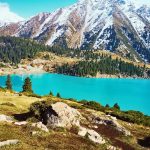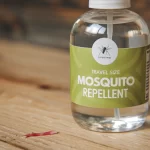Embarking on a trek is an exhilarating experience, offering breathtaking views, a sense of accomplishment, and a deep connection with nature. However, packing the right gear can make or break your adventure.
Whether you’re planning a short hike or a challenging and off-the-beaten multi-day trek, like the Manaslu Circuit Trek, being well-prepared is key. This guide will walk you through the essential items to pack, making it easy for beginners to get ready for their first trekking adventure.
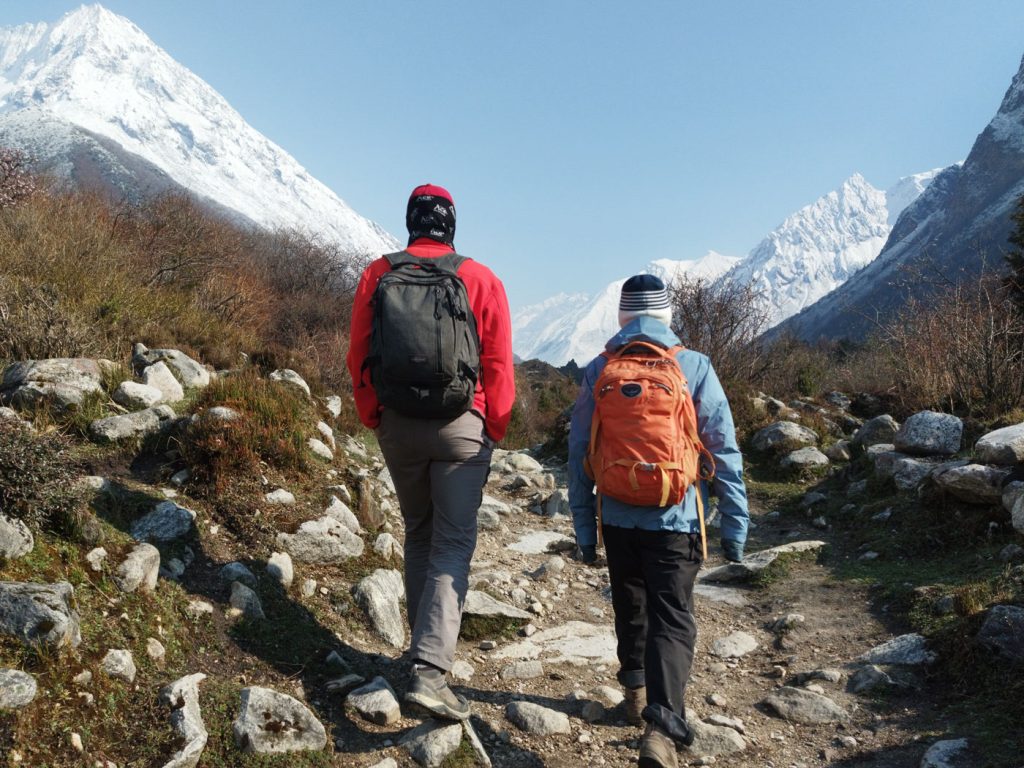
Content
1. Clothing: Layer Up for Comfort and Versatility
Trekking involves varying weather conditions, especially in mountainous regions. The key to staying comfortable is layering:
- Base Layer: This layer is in direct contact with your skin, so opt for moisture-wicking materials like merino wool or synthetic fabrics. They keep you dry by drawing sweat away from your body.
- Mid Layer: This insulating layer traps body heat, keeping you warm. A fleece jacket or down sweater works well in this category.
- Outer Layer: Your outer layer should protect you from wind, rain, and snow. A waterproof and breathable jacket, paired with rain pants, will serve you well in unpredictable weather.
- Additional Items: Don’t forget a hat, gloves, and a buff or scarf. Depending on the season, pack warm trekking socks (merino wool is a great option) and thermal underwear.
2. Footwear: Invest in Your Feet’s Comfort
Your feet will carry you through the trek, so investing in the right footwear is crucial.
- Trekking Boots: Choose sturdy, waterproof trekking boots with ankle support. Make sure to break them in before the trek to avoid blisters.
- Camp Shoes: After a long day of trekking, slipping into comfortable camp shoes or sandals gives your feet a much-needed break.
- Socks: Bring several pairs of trekking socks. Wool or synthetic blends are preferred over cotton for their moisture-wicking properties.
3. Backpack: Your Travel Companion
A good backpack is your best companion on a trek. It should be spacious enough to carry your essentials but comfortable enough to carry all day.
- Daypack (20-30L): If you’re going on shorter day hikes or have porters to carry your main gear, a daypack is sufficient. Look for one with a hydration bladder compartment and external pockets.
- Trekking Backpack (50-70L): For multi-day treks, choose a larger backpack with a comfortable hip belt and adjustable straps. Ensure it has a rain cover or waterproof lining.
4. Navigation and Safety Gear
Even if you’re trekking with a guide, having your own navigation and safety gear is essential.
- Map and Compass/GPS: Knowing how to use a map and compass or GPS device is a valuable skill on any trek.
- Headlamp: A reliable headlamp with extra batteries is a must for early starts or late arrivals at camp.
- First Aid Kit: Include bandages, antiseptic wipes, blister treatments, pain relievers, and any personal medications.
- Trekking Poles: These provide stability on uneven terrain and reduce strain on your knees.
5. Hydration and Nutrition
Staying hydrated and well-nourished is key to maintaining energy levels on a trek.
- Water Bottles or Hydration System: Carry at least 2 liters of water. A hydration bladder allows you to sip water without stopping.
- Water Purification: Whether you choose water purification tablets, a portable filter, or a UV purifier, it’s essential to have a way to make water safe to drink.
- Snacks: High-energy snacks like nuts, dried fruit, energy bars, and chocolate are great for quick energy boosts on the trail.
6. Shelter and Sleeping Gear
If your trek involves camping, ensuring you have the right shelter and sleeping gear is crucial.
- Tent: Choose a lightweight, weather-resistant tent suitable for the conditions you’ll encounter.
- Sleeping Bag: Match your sleeping bag to the expected temperatures, considering the season and altitude. Down sleeping bags offer excellent warmth-to-weight ratio.
- Sleeping Pad: A good sleeping pad provides insulation from the cold ground and adds comfort.
7. Personal Items and Toiletries
Don’t forget the essentials for personal hygiene and comfort.
- Toiletries: Pack biodegradable soap, toothbrush, toothpaste, and hand sanitizer. Include a small towel and wet wipes for quick cleanups.
- Sun Protection: Sunglasses with UV protection, sunscreen (SPF 30 or higher), and lip balm with SPF are essential for high-altitude treks.
- Travel Documents: Always carry your passport, permits, and any other required documents in a waterproof pouch.
8. Miscellaneous Items
These items might not fall under specific categories, but they can enhance your trekking experience.
- Camera: Capture the breathtaking landscapes, but ensure it’s lightweight and protected from the elements.
- Power Bank: Keep your devices charged, especially if you’re using your phone for navigation or photography.
- Journal and Pen: Document your thoughts and experiences each day.
Final Thoughts: Be Prepared, Not Overpacked
Packing for a trek, especially for beginners, can seem overwhelming. However, with this guide, you can confidently prepare for your adventure. Remember, the goal is to be prepared, not overpacked. Each item should have a purpose, and your pack should be as light as possible without sacrificing essentials.
By following this guide, you’ll be well-equipped for your trek, whether it’s a short-day hike or a multi-day adventure.

An avid traveler, Kirk Grover has been to over 50 countries. He has an extensive background in tourism and hospitality management, along with a degree in Hospitality Management from the University of Nevada Las Vegas. Kirk is very knowledgeable about travel-related topics – they are always up to date on the latest deals for flights, hotels, and other adventures around the world.

